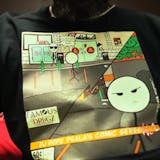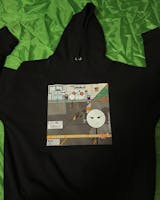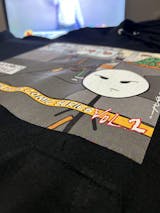Washing and drying instructions are important for printed clothes. You should follow these instructions when you want to design printed clothes. The reason for this is that you will use your printed garment for a longer period of time. Therefore, you should know the washing and drying instructions for your printed clothing. In this article, we will give you information about the recommended washing and drying instructions for printed clothing.
What is a Washing Instruction Label?
A washing instruction label is a guide that is found on almost all clothes. This label, which is a guide, provides information on washing, drying and ironing specific to the garment. Thanks to these labels on the inside of the products, you can have information about how to wash and iron your clothes. If you have a printed garment and it does not have a washing instruction label, you should investigate this. If you want to learn how to wash and dry your clothes, you can continue reading this content.
Why Look at the Washing Instructions?
You should know the washing and drying instructions for the correct use of the clothing products you buy. Because if you do not know these instructions, you can wash and iron incorrectly. This situation is considered a consumer error. Therefore, you should follow the washing instructions to wear your clothes for a long time without damaging them. The washing instructions are actually a user manual. If you follow the instructions, you can use your clothes in a healthy way for a long time.
How Many Degrees Should Printed Clothing Be Washed?
To wash your printed garment, you should consider the washing temperature on the washing instruction label. This temperature is determined specifically for your garment. Since it says the optimum temperature, you should wash accordingly. If your printed garment does not have a washing instruction label, you can find one by searching. It is important to wash your garment at 40 degrees if it is cotton and 30 degrees if it is silk and delicate. It is also recommended that the water temperature is cold.
How to Iron Printed Clothing?
There are also some instructions for ironing your printed garment. However, these instructions may vary depending on the fabric of each garment, the print of the t-shirt and the ink used. Printed clothes are usually ironed according to these steps:
- First, heat the iron and lay your garment on the ironing board.
- Turn the printed side of your garment over and adjust the temperature.
- Press lightly on the print surface from the reverse side. It is important not to leave too much iron on the printed surface.
- After ironing the printed side, turn it over and iron the other side at a low temperature.
- Do not use your garment immediately after ironing and lay it somewhere.
- You can wear your printed garment after the ironing temperature has passed.
How to Dry Printed Clothing?
Drying the DTF transfer or other printed garment is one of the important issues in terms of its correct use. We do not recommend drying your garment in the dryer after taking it out of the machine. Because these machines contain high heat, it may cause premature destruction of your clothes. For this reason, drying naturally can provide longer life. After you take your printed garment out of the washing machine, you can turn it inside out and hang it on the clothes drying wire. Thus, it will dry naturally without getting sunlight and wear and tear.
If you are in a hurry, you can also dry them in a tumble dryer. However, it may be better to dry it with a short program at very low heat. This way, the structure of the garment will not change as it is not exposed to too much heat. You can also dry your DTF transfer garment naturally or in a tumble dryer in an emergency. We will prepare and send you the necessary instructions for your printed garment. You can contact us for washing, drying and ironing instructions for clothes designed with DTF transfer.








